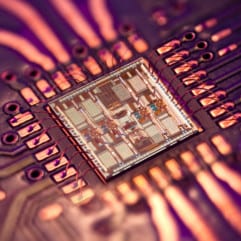Physical Medium Dependent, also known as PMD, defines the details of transmission and reception of individual bits on a physical medium. These responsibilities encompass bit timing, signal encoding, interacting with the physical medium, and the properties of the cable, optical fiber, or wire itself.
The Ethernet PMD sublayer is part of the Ethernet physical layer (PHY).
In this article:
- What is Physical Medium Dependent
- Real examples of Physical Medium Dependent (PMD) components
- Physical Medium Dependent on Fiber Distributed Data Interface
- References
1. What is Physical Medium Dependent?
Physical Medium Dependent (PMD) is a sublayer of the Data Link Layer in the OSI model that’s directly involved with the physical connection between network devices. It’s responsible for aspects like data transmission and reception over a physical medium, such as fiber optics or copper cables. PMD plays a crucial role in determining the parameters for data transmission, including the type of cable, signal strength, and the data rate. It ensures compatibility between the physical transmission medium and the higher-level data link layer, facilitating effective communication over various types of networks. PMD is essential in network design and operation, particularly in high-speed networks where transmission quality and reliability are paramount.
2. Real examples of Physical Medium Dependent (PMD) components
Real examples of Physical Medium Dependent (PMD) components and their functions in data transmission include:
- Fiber Optic Cables in PMD: Used in high-speed network connections like FDDI or Gigabit Ethernet. These cables transmit data through light signals, offering high bandwidth and low signal attenuation over long distances.
- Copper Cables in PMD: Common in traditional Ethernet networks (like Cat 5, Cat 6 cables). They use electrical signals for data transmission and are typically used for shorter distances due to signal degradation over longer lengths.
- Transceivers in PMD: Devices like SFP modules in network switches, converting electrical signals to optical for fiber optics, or vice versa. They are crucial for connecting different types of networks and supporting various data rates.
- Photodetectors in PMD for Fiber Networks: Convert light signals back into electrical signals at the receiving end in fiber optic communication.
These components are integral to the functioning of various network types, ensuring appropriate data transmission methods are used based on the physical medium.
3. Physical Medium Dependent on Fiber Distributed Data Interface
PMD represents the lowest sublayer supported by FDDI. This document specifies the requirements for the optical power sources, photodetectors, transceivers, MIC (medium interface connector), and cabling. This is the only optic (as opposed to electrical) level and corresponds roughly to the lower parts of the physical layer in the OSI Reference Model.
The power source must be able to send a signal of at least 25 microwatts (25 millionths of a watt) into the fiber. The photodetector, or light receptor, must be able to pick up a signal as weak as 2 microwatts.

The MIC for FDDI connections serves as the interface between the electrical and optical components of the architecture. This connector was specially designed by ANSI for FDDI and is also known as the FDDI connector.
The cabling specified at this sublayer calls for two rings running in opposite directions. The primary ring is the main transmission medium. A secondary ring provides redundancy by making it possible to transmit the data in the opposite direction if necessary. When the primary ring is working properly, the secondary ring is generally idle.
